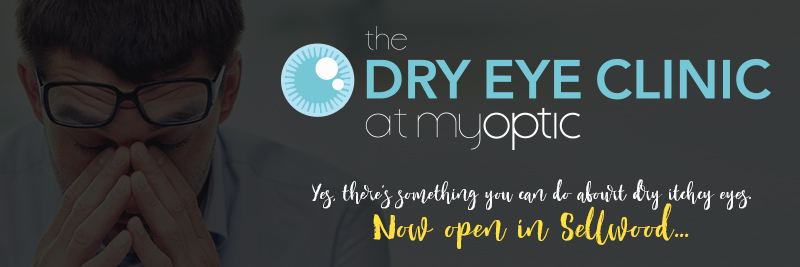
Have your eyes ever felt dry or irritated at the end of the day? Have you stopped wearing contacts because they are too uncomfortable? Or, do you stare at a screen for more than 2 hours a day?
If you have answered “yes” to any of these questions you probably have experienced dry eye symptoms.
What is dry eye?
Dry eye can be defined as a lack of tear film production or a decreased quality of tear film. The tear film is composed of 3 layers.The outermost layer is the oily or lipid layer that is produced in the meibomian gland which line the upper and lower lid margins. This layer helps to seal in the tear film and reduce evaporation.
The watery layers is the middle portion of the tear film produced by the lacrimal glands and helps to wash away debris and clean the ocular surface.
The mucus layer is the innermost layer helps to spread the watery layer over the cornea and helps the tears stick to the eye.
What causes dry eye?
The phrase “dry eye” is such a common term that many times we forget the dry eye is a chronic disease that must be treated and continually managed.
Unfortunately there is a huge increase in dry eye and lid disease from increased screen time. From our phones to our computers, the lack of blinking has caused our lids to change and lose their ability to make healthy tears. We are even seeing these changes in children. These changes are permanent but treatable.
There are many other factors that can cause dry eye can be systemic diseases such as Sjogren’s disease or diabetes, hormonal changes, age, medications, or exposure to sun, wind, or dry environments.
How do we treat dry eye?
Most often dry eye is caused by a combination of health and lifestyle factors. At Myoptic, we use advanced techniques and technology to assess your tear film, meibomian glands, eyelids, ocular surface, and blink techniques. We also evaluate health, medical history, and environment to tailor a dry eye treatment that is specific to you. We help to increase the quality of tears and decrease inflammation that can exacerbate dry eye symptoms.
Some of these treatments include:
Artificial tears: Non-preserved artificial tears can be used to supplement natural tears in mild cases. However, dry eye cannot be treated with artificial tears alone.
Increasing tear quality production: Omegas and fish oil supplements can help boost the lipid portion of the tear film which can reduce evaporation. Or prescription drops such as Restasis or Xiidra can help increase tear production and decrease inflammation, respectively.
Decreasing inflammation: Ointments, steroids, eyelid cleansers, warm compresses, and lid massage.
These are just a few of the treatments to help ensure healthy and comfortable eyes and vision.
We are incredibly excited to be opening a third Myoptic clinic in Sellwood where we will have a specialty dry eye clinic. We will have the best state of the art equipment to ensure that we can best treat and manage dry eye symptoms.







Do any of your other locations have a dry eye clinic or just sellwood?